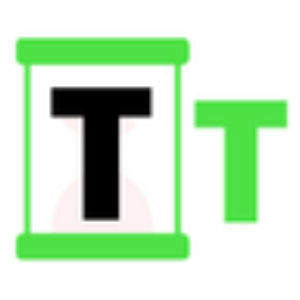Global Banks Are Quietly Building on XRP Ledger
4 min read
In a development that could reshape the future of institutional blockchain adoption, several global banks are reportedly exploring and quietly building on the XRP Ledger (XRPL). This revelation, highlighted in a recent post by Levi of Crypto Crusaders on X, indicates a growing institutional interest in the broader capabilities of XRPL, moving well beyond its traditional reputation as a cross-border payments facilitator. BREAKING: Global Banks are quietly building on XRP Ledger! Banks are reportedly moving beyond basic payment solutions, examining the broader capabilities of the XRP Ledger technology. The XRP Ledger is currently positioned as more than a cross-border settlement tool. Although… pic.twitter.com/3R2keWUu53 — Levi | Crypto Crusaders (@LeviRietveld) May 22, 2025 A New Phase for the XRP Ledger The XRP Ledger, often associated primarily with Ripple’s On-Demand Liquidity (ODL) service for real-time cross-border settlements, is now being eyed by banks for a broader range of applications. Levi’s update underscores a subtle yet significant shift: while the adoption of XRPL’s advanced features may not yet be widespread, global financial institutions are already testing its capabilities for more complex use cases. This quiet build phase is seen by many as a precursor to broader, public-facing implementation. Originally launched in 2012, the XRP Ledger is a decentralized, open-source blockchain designed for speed, low transaction costs, and scalability. Its consensus mechanism, which differs from traditional proof-of-work or proof-of-stake models, allows for faster settlement times and minimal energy consumption. Over the past decade, it has built a reputation for reliability, processing millions of transactions and underpinning various fintech solutions. Beyond Cross-Border Payments: Unlocking Full XRPL Utility The financial industry has long been conservative when it comes to adopting new technologies, especially those built on public blockchains. However, the XRPL is proving an exception to that rule due to its unique blend of enterprise-grade features and decentralized architecture. According to several on-chain analytics and developer reports, banks are investigating and quietly deploying smart contract functionalities through XRPL’s native Hooks and sidechain technologies. These features offer programmability similar to Ethereum but are designed to operate with the ledger’s native efficiency and cost-effectiveness. The introduction of the XRPL EVM sidechain —spearheaded by Peersyst Technology in collaboration with Ripple—has further enhanced the potential for DeFi, tokenization, and other decentralized finance solutions on the network, drawing additional interest from institutional actors. Tokenization of real-world assets (RWAs), custody solutions, and even carbon credit markets are among the potential uses under exploration. Ripple’s recent collaborations with institutions in Asia and the Middle East to develop digital currency frameworks—particularly central bank digital currencies (CBDCs)—have also contributed to heightened interest in the infrastructure underpinning these pilots. We are on twitter, follow us to connect with us :- @TimesTabloid1 — TimesTabloid (@TimesTabloid1) July 15, 2023 Growing Institutional Momentum and Strategic Positioning The signs of quiet institutional engagement are not merely speculative. Ripple has long maintained a strategy of forging key partnerships with central banks, financial institutions, and regulatory bodies to ensure that its technologies, including the XRPL, are compliant and scalable. The XRP Ledger’s ability to meet ISO 20022 messaging standards makes it particularly attractive to banks seeking to modernize their infrastructure while maintaining interoperability with legacy systems. Furthermore, Ripple’s participation in the Digital Euro and Digital Pound initiatives and the company’s selection by numerous countries for CBDC pilots position the XRP Ledger as a foundational technology in the evolving global financial landscape. As banks test the waters behind the scenes, the groundwork is being laid for wider public adoption and integration. Quiet Build, Loud Future Though still in its early phases, the quiet development efforts by global banks on the XRP Ledger represent a transformative undercurrent in the world of finance. As noted by Levi of Crypto Crusaders, this trend may not yet be widely visible to the public, but the increasing level of behind-the-scenes activity suggests that financial institutions are preparing for a future where the XRPL plays a central role. If momentum continues and current pilot programs bear fruit, the XRP Ledger could soon emerge not just as a tool for efficient payments but as a comprehensive infrastructure layer for next-generation financial services, anchored by trust, speed, and interoperability. Disclaimer : This content is meant to inform and should not be considered financial advice. The views expressed in this article may include the author’s personal opinions and do not represent Times Tabloid’s opinion. Readers are urged to do in-depth research before making any investment decisions. Any action taken by the reader is strictly at their own risk. Times Tabloid is not responsible for any financial losses. Follow us on Twitter , Facebook , Telegram , and Google News The post Global Banks Are Quietly Building on XRP Ledger appeared first on Times Tabloid .

Source: TimesTabloid



